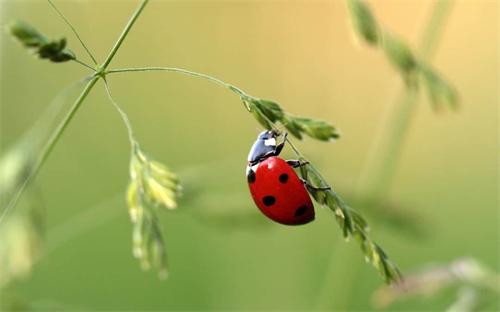
Beneficial insects act as natural allies in the garden, providing essential services such as pest control and pollination to promote healthy plant growth. By inviting these tiny guardians into our outdoor spaces, gardeners can foster biodiversity, reduce reliance on synthetic pesticides, and create resilient ecosystems. This essay will explore the most effective beneficial insects to introduce this season, the roles they play, and practical strategies for welcoming them into your garden.
Key Beneficial Insects
Ladybugs (Lady Beetles)
Ladybugs are voracious predators of aphids, mites, and other soft-bodied pests, consuming dozens of aphids per day in their larval stage. Both adults and larvae patrol foliage in search of prey, making them one of the most effective garden biocontrol agents. Encouraging ladybugs reduces damage to roses, vegetables, and ornamentals without the use of harmful chemicals.
Lacewings
Green lacewings, recognizable by their delicate wings and golden eyes, feed on aphids, whiteflies, and small caterpillars during both larval and adult stages. A single lacewing larva can consume hundreds of aphids before pupating, offering substantial pest suppression. Planting nectar-rich flowers like dill, cosmos, and alyssum provides adult lacewings with the energy they need to reproduce and continue their lifecycle.
Parasitic Wasps
Parasitic wasps, such as Trichogramma and Aphidius species, lay eggs inside or on pest insects like caterpillars and aphids, effectively halting their growth and reproduction. Gardeners can introduce these tiny wasps to target specific pests, achieving a high degree of control with minimal visible insect activity. Their silent work often goes unnoticed, but the resulting “mummified” pests signal a healthy population of beneficials at work.
How to Introduce and Support Beneficials?
Provide Food and Water
Offer diverse nectar and pollen sources—annuals, perennials, and herbs—to sustain adult beneficial insects. A shallow dish filled with sand and water creates safe drinking sites without drowning risks. Avoid broad-spectrum insecticides and opt for targeted, least-toxic treatments only when absolutely necessary to protect non-target species.
Create Habitat and Shelter
Mulch layers, native bunch grasses, and log piles offer overwintering sites for ground beetles and lacewings. Install insect hotels or bundles of hollow stems to provide nesting sites for solitary bees and parasitic wasps. Maintaining a patch of undisturbed vegetation allows beneficials to establish and thrive year-round, ensuring ongoing pest control and pollination.
Strategic Planting
Companion planting with “superhero” blooms—lavender, marigolds, alliums, and catmint—can naturally repel pests and attract predators. Interplant flowering herbs like dill and parsley among vegetable rows to draw lacewings, hoverflies, and parasitic wasps directly into pest hotspots. By placing the right plants where pests are most likely to appear, you create a self-regulating ecosystem that keeps your garden healthy.
By understanding the roles of key beneficial insects and implementing targeted strategies to support them, gardeners can harness nature’s own pest control and pollination services. Inviting ladybugs, lacewings, parasitic wasps, and other garden guardians not only reduces chemical inputs but also boosts biodiversity and resilience. Embrace these tiny allies this season—your flourishing, balanced garden will thank you.
Recommend:

8 Spectacular Destinations to Stay and Witness Nature's Marvels

6 front yard landscape design ideas that will change your home

10 Free Things to Do in Washington State: Exploring the Pacific Northwest on a Budget

Artificial sweeteners may have adverse effects on gut microbes

